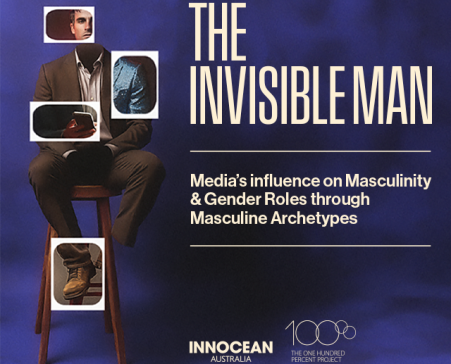Diversity of Thought Blog
Unconscious Bias and Flexibility. Why flexible work is still off-limits for the ‘ideal’ employee.
By Rachel Brodsky
Workplace flexibility has been receiving a lot of attention lately, with more business and employees raising it as one of the most important workplace issues today. The benefits for both businesses and society have been well established and accepted with little resistance, yet we are still seeing little change in the uptake of flexible work options, especially by men. It appears that despite this logical argument, the bias and stigma associated with flexible work being in opposition to the ‘ideal employee’ is yet to change.
Many individuals are motivated to drive change in an effort to achieve the optimum work-life balance, especially when raising a family. After career progression and salary, workplace flexibility is the next most important feature that job seekers are looking for[1]. However, many businesses do not appear to currently be in step with their work force demands, with a narrow description of the ideal worker and a reluctance to embrace work flexibility. The internalised perceptions by both men and women regarding gender roles and work flexibility leads to the perpetuation of women shouldering work-life balance challenges through access to flexible work options, while men are keen to assist, but remain inactive. Bringing these unconscious gender role biases by both men and women to light and acknowledging the desires of the current workforce could potentially lead to better satisfaction in all aspects of life, improve productivity and potentially further previously stunted careers regardless of gender.
Today’s ‘Ideal Employee’: single, male, young and unattached.
Despite there being 11,654,500 employed persons in Australia[2] , the majority of businesses are only looking for a specific type of person: single, young, male and unattached. Kronos Australia conducted a study, Australia’s Hidden Workforce, surveying 500 business decision-makers, along with 2,000 employees of various labour intensive industries, finding that there was, “a perception among businesses and employees that the employability of an individual was dependent on factors including: gender, age, willingness to work longer hours and holding an unbroken career record”.
This report emphasised that workplaces look for people who will prioritise work above all else in their lives, with many “managers believing that a sense of dedication, commitment to work full-time and constant ‘face time’ in the workplace is essential to achieve effective job performance”[3].
This ideology of the ideal worker appears to have been internalised by employees too, with 40% of those surveyed stating that men are more employable from an employer’s perspective[4].
As 46% of the Australian workforce, women are more likely to hold a year 12 or formal qualification at certificate II or above than men (87.8% women; 84.1% men) and comprise 62% of University graduates. It appears that this perception of the “ideal worker” describes are very narrow sliver of the available talent pool.
Despite wanting employees who work inflexibly and have linear career paths, this report found that loyalty and staff retention is largely attributed to the availability of flexible work arrangements. Women especially seek flexible work arrangements after having children with ‘‘almost all of the women surveyed (96.7%) keen to return to work after a career break, such as parenthood, if their employers offered flexible working hours[5]’. The retention of women in the workforce is quite high if their employer facilitates the opportunity for a successful work-life balance, with the ABS reporting that “most mothers (86%) who had started or returned to work following the birth of their child used flexible work arrangements in their first job returned to in order to care for their child” [6]. The availability of flexible work arrangements enables the employment of a potentially rejected “non-ideal” proportion of the capable workforce. This is otherwise known as half the population. Despite this, almost half of the organisations surveyed do not offer options such as flexitime.
But… men don’t work flexibly.
Working part time or flexibly is often associated with women who have children, as an arrangement that can accommodate their particular needs during that life stage. However, despite men not accessing flexible work options, this is not for lack of wanting to use them.
In 2011, The 100% Project‘s research What Men Want and Why it Matters to Women, found that men want to spend more time and energy with their families, are willing to accept costs to other areas of their life so they can be involved in the day-to-day care of their children, don’t want to sacrifice everything for their careers and will work harder for employers who allow this to happen. Despite this, they won’t ask for better work-life balance for fear that it will harm their careers.
The study also found that men are more likely to be satisfied with their life as a whole if they are happy with their own work-life balance and that they are more likely to be engaged (meaning they are more committed and willing to put in more discretionary effort at work) if they work for an organisation that encourages work-life balance[7] .
We can see that men also crave a work-life balance and are found to perform better if these options are offered by employers. So why don’t men use flexible work options more often?
With the increase in dual income families, it seems workplaces are lagging behind these social changes, as we see a precise stigma attached to working flexibly. While men often work for organisations where flexible work initiatives are offered, they don’t always request or take advantages of the options. Only a quarter (27%) of men surveyed had requested greater work-life balance from their employers at some point in their careers, as compared to 46% of the women. This lack of action is most likely due to an unconscious attitude associating flexible work arrangements to be more relevant for women and wanting to fulfil the profile of the ‘ideal employee’.
Our 2013 research Men at Work: What They Want and How Unconscious Bias Stops Them Getting It,[8] confirmed that the bias that flexible work not appropriate for men. Using a Go/No-Go Association Test, we were able to measure the unconscious association between gender and the concept of a work-life balance. This test measured how quickly a respondent matched the concept, work-life balance, and the categories, men and women.
Surprisingly, both men and women more strongly associated women with work-life balance than men, implying that both genders hold the unconscious bias that work-life balance is for women and not for men. . If working flexibly is seen as only an option for women, there is no doubt that men will be reluctant to request these work options, therefore limiting their ability to create a better work-life balance and assist with child raising.

Men at work: What They want and Why it matters to Women.
Both men and women more strongly associate work-life balance concepts with women, than men.
The potential to bring these implicit attitudes to light have far reaching effects for both families and businesses. This means supporting and empowering men to ask for flexible work and address the very real fear of negative judgements for doing so. These findings also show us that this is not just about targeting men to work more flexibly, as women themselves also unconsciously associate themselves with flexible work patterns and primary childrearing responsibilities.
To address these biases and assumptions, managers need to consider how their perception of the ideal employee could be restricting their team performance and how embedding a flexible work culture can create a strategic advantage. The issue faced here is more complicated than merely finger pointing at one specific party involved. Both employees and their employers need to recognise the current shift occurring in the workforce and the potential benefits of both men and women being able to achieve their full potential both inside and outside of the workplace.
 Rachel Brodsky grew up in Florida, USA. She attended Boston University, where she received a Bachelor of Arts degree in Psychology. It was at her time at university that she explored her passion for gender equality and women’s rights. Since moving to Australia in 2009, she has begun her career in Market Research and outside of work she finds time to play netball, do yoga and play in the community orchestra. Rachel is very excited to be working on Beyond the Spin and contributing to the 100% Project mission.
Rachel Brodsky grew up in Florida, USA. She attended Boston University, where she received a Bachelor of Arts degree in Psychology. It was at her time at university that she explored her passion for gender equality and women’s rights. Since moving to Australia in 2009, she has begun her career in Market Research and outside of work she finds time to play netball, do yoga and play in the community orchestra. Rachel is very excited to be working on Beyond the Spin and contributing to the 100% Project mission.
[1] Employee Intentions Report, 2013. Michael Page.
[2] Australian Bureau of Statistics 2013, Labour Force Commentary November 2013, cat. no. 6202.0, ABS, Canberra. http://www.abs.gov.au/ausstats/abs@.nsf/Latestproducts/6202.0Main%20Features2Nov%202013?opendocument&tabname=Summary&prodno=6202.0&issue=Nov%202013&num=&view=
[3] (Kronos Australia, pg3)
[4] (Kronos Australia, pg4).
[5] ‘ (Kronos Australia, pg4).
[6] Australian Bureau of Statistics 2013, ‘‘Pregnancy and Work Transitions’‘, Australian Social Trends, Aug 2013, cat. no. 4102.0, ABS, Canberra.
http://www.abs.gov.au/ausstats/abs@.nsf/Lookup/4102.0Main+Features10Nov+2013#at1



